Culture
Discovery Of India’s ‘Oldest Observatory’ Reconnects Us To Our Ancient Sacred Culture
Aravindan Neelakandan
Dec 31, 2016, 04:37 PM | Updated 04:37 PM IST
Save & read from anywhere!
Bookmark stories for easy access on any device or the Swarajya app.
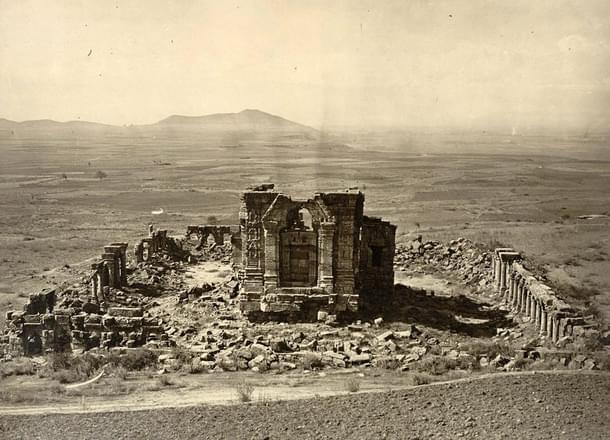
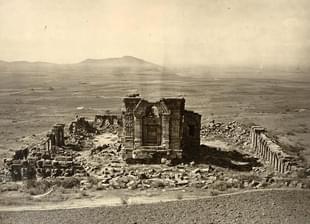
Of all the discoveries made in 2016, there is one among the few that stood out. It is the discovery by a team of Indian archeologists in a remote village in the newest state of India – a place that should be considered ‘the oldest observatory’ in the Indian region. The site is a 7,000 years Before Present (BP) megalithic site in Mudumal village in Telangana, India. In south-Indian languages, mudumal means ancient hill.
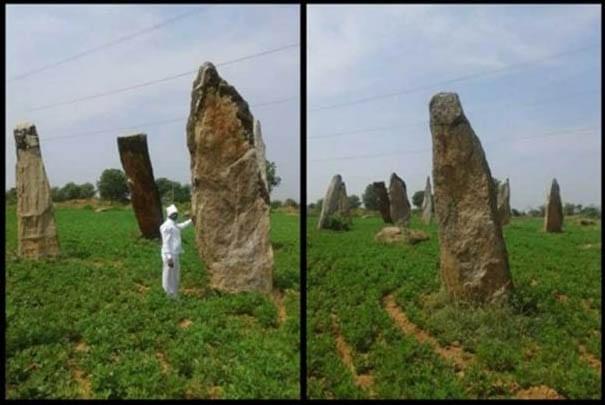
Here, the archeologists have discovered “a depiction of a star constellation”, perhaps only one of its kind discovered in a megalithic structure in India. The megalithic site itself is just one of several with 80 large menhirs (3.5-4m) and about 2,000 alignment stones, (30-60cm), spread over an area of 80 acres. Such a large concentration and arrangement of megalithic structures in such a small area is in itself a rarity. The central part of the entire site is the most densely populated.
The findings related to astronomy are especially fascinating. There is a cup-mark depiction of Ursa Major (Saptarishi) of the northern skies. Another feature is the arrangement of 30 cup-marks that seems to imitate the stellar configuration of the night skies. Also discovered is an imaginary line drawn from the upper two stars (Kratu and Pulaha) in megalithic imitation of Saptarishi pointed to the Pole Star (Dhruva). The findings await further confirmation, though the initial scholarly responses appear positive.
Meanwhile, almost 7,800km away in Australia, an astronomer at Monash University, Duane Hamacher, who is studying the Wurdi Youang stone arrangement – an aboriginal sacred site – is coming to a conclusion similar to that of Indian astronomers. These stone arrangements were made in the past for the sake of astronomical observations.
The stone arrangement is made up of about a hundred basalt stones. Arranged like an incomplete egg, the key stones in the arrangement are aligned to mark the solstice and equinox sunsets. Hamacher’s in-depth and ongoing study of aboriginal astronomy and other knowledge systems has made him alert to the biases in academia and media with respect to his findings. “Some academics have referred to this stone arrangement here as Australia's version of the Stonehenge,” he points out; however, he says, “The question we might have to ask is, is Stonehenge Britain's version of Wurdi Youang? Because this could be much, much older.”
The archeo-astronomical discovery has other ramifications too. It challenges the colonial myth, which is still the dominant historical narrative, that the aborigines were nomads. The stones are estimated by geologists to be almost 11,000 BP. If such structures were created by people with knowledge of astronomy, they were more sedentary than they were nomads, and that might offer a clue to the origin of agriculture as well.
Science writer Ray Norris writes about “the remarkable similarity between Aboriginal stories about stars and those of the Ancient Greeks” in his recent article for the New Scientist ('Written in the Stars'). The Greek and Hindu mythological parallels have already been well-established. So, perhaps, the proposal of British geneticist and author Stephen Oppenheimer of a common origin for mythologies in Southeast Asian and Oceanic regions needs a serious relook.
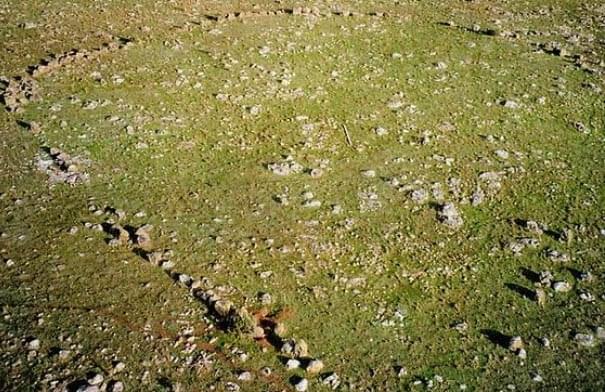
Of course, solstices and equinoxes have been celebrated the world over. And megalithic structures and indigenous cultures have created sacred spaces based on these two times of the year. In the Petrified Forest National Park in Navajo and Apache counties of Arizona, the United States, during summer solstice, a sunbeam is projected onto a sacred rock, which then travels down to the centre of the spiral.
In England, there is the famed Stonehenge. This, too, was once a pagan ritual centre. Famous physicist, polymath and a somewhat controversial figure Sir Fred Hoyle was also a Stonehenge expert. He conjectured that this stone structure was constructed with astronomical knowledge, and was used to predict solar and lunar eclipses (On Stonehenge, 1977). Eclipse rituals were perhaps performed here. Archeologist Aubrey Burl, who had spent a lifetime studying stone circles, also thinks that these structures have religious significance related to lunar circles.
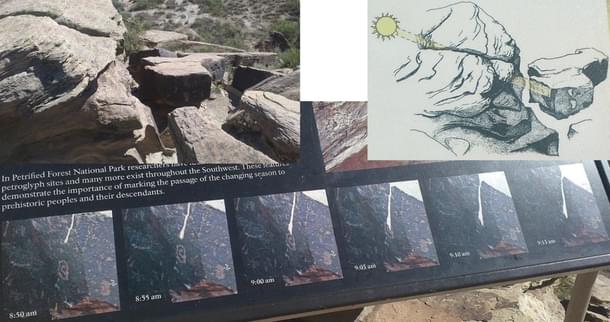
The discovery of an implicit order in the immense celestial circles should have filled the human mind with awe, which would have become the womb for all artistic and scientific achievements of humanity. Hoyle points out that the eighteenth-century poet and painter William Blake seemed to have intuitively grasped this connection when he portrayed the Stonehenge with a lunar eclipse and three figures whom he identified as Bacon, Newton and Locke, in the drawing for his poem ‘Jerusalem’.
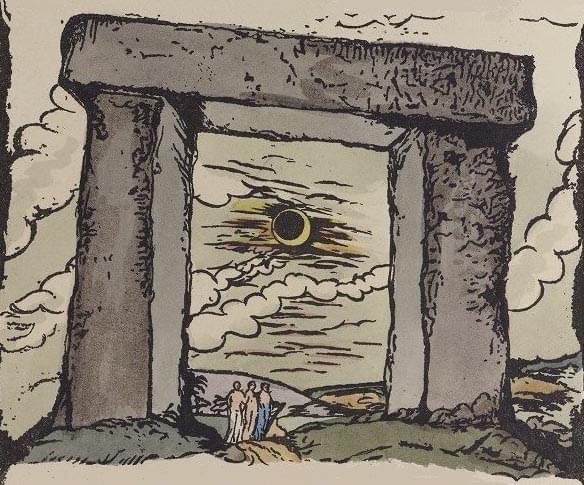
Even in Mecca, the famous Kaaba stone was said to have been surrounded by 360 stone deities arranged in a circle, before the sword of Islam destroyed those shrines. Perhaps there too existed a cultural continuity from megalithic astronomical spirituality which was destroyed by the monotheistic zeal of Muhammad.
Back in India, solstices and equinoxes have been embedded in the living culture, and the roots perhaps would have been embedded in the megalithic astronomical substratum. Even today, there are scores of centuries-old temples where the first rays of the solstice sun strike the interior shrine.
A detailed study of the famous Gavi Gangadhareshwara Temple in Karnataka, where the sun rays touch the Shiva Linga on Makara Sankranthi, was taken up by the astronomers of Jawaharlal Nehru Planetarium, Bengaluru. They discovered that it was a unique temple which incorporated a marking for both the solstices. They studied a painting of the temple dated 1792, which showed that “the passage of the sunlight into the cave was probably intended for marking winter solstice”. And the new construction made in the last two centuries had actually disrupted the way sunlight interacted with this cave temple as originally intended.
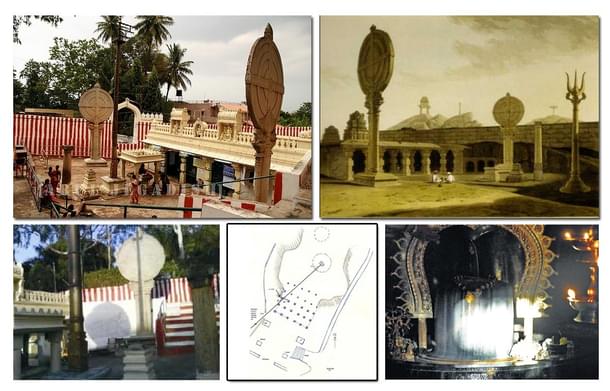
In Tamil Nadu, there are many such temples which await a proper study.
- In the southern district of Tirunelveli, at Srivaikuntam, is a Vishnu temple. On the fifth and sixth days of the first month of the Tamil calendar (during the period of spring equinox), the local legend says that the sun arrives here to worship Vishnu. On those days, the morning sun rays directly touch the murthi placed in the sanctum.
- At the Nageshwar temple in the famous temple town of Kumbakonam, starting on the eleventh day of the first month of the Tamil calendar, the sun rays directly touch the linga in the sanctum of the temple for three days.
- At the Nelli Vananageshwar temple in Tanjore district, during the seventh month of the Tamil Calendar (aligning with the autumnal equinox period), the sun is said to pray to the deity for seven days.
In Trivandrum, Kerala, one can see inside, through the doors of the gopuram of the temple, a dramatic slow descent of the autumnal equinox sun.
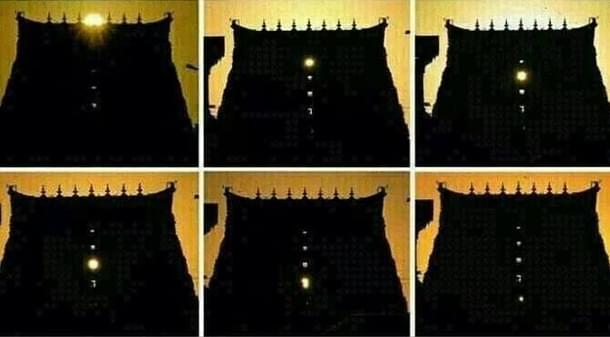
There is a strong possibility that while the shrines and temples were later additions, the original sanctum deity – usually a swayambhu – could have been an astronomically-aligned sacred stone that has come to us from the megalithic times. Perhaps only in Indian culture have these elements been preserved in the subsequent temple architecture and the mythologies.
Mythologies too may have encoded the continuity of the ancient megalithic astronomical traditions. Samba Purana speaks of Samba, the son of Krishna, through the bear clan leader Jambavan as the one who built three temples for the sun in India; Konark was built for the morning sun and in eastern India; the Modhera temple in Gujarat, which was built for the evening sun and situated along the western coast of India; Multan temple (now in Pakistan) for the afternoon sun. Though Samba Purana is a later-day mythology, the sun temples themselves should have been older. For example, even a Greek account of Alexander’s time mentions a magnificent sun temple in Taxila (which is now in Pakistan). We don’t know if these temples were aligned to the movement of the sun on a pan-Indian scale.
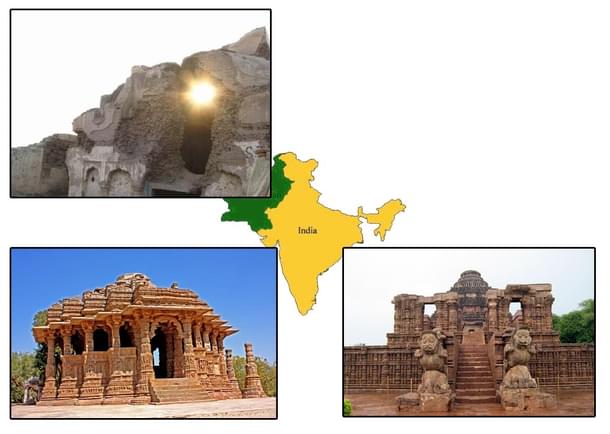
Samba Purana also speaks of bringing Maga Brahmins from Mithra Desa, meaning the cross-fertilisation of the Mithra tradition, then flourishing in Persia, with Indic sun veneration. Persian Mithra tradition itself could have branched from the Vedic sun worship, and we do know that the sun mythology embedded in Mithra worship ultimately was carried by Romans to the West, where it enriched the solar Jesus myth, whose birth and resurrection would align with winter solstice and spring equinox respectively.
The seventh-century Chinese pilgrim Xuanzang, or Hsüan-tsang, also mentions the well-established sun temple at Multan which, today, is utterly destroyed to a pile of stones and in quite a degraded condition. Hsüan-tsang’s description speaks of “the image of the Sun cast in yellow gold and ornamented with rare gems”. Though himself a Buddhist, he felt its “divine insight” and “its spiritual powers made lain to all”. Then, he describes women playing music and of constant royal patronage. The temple was also a centre for compassion. He writes:
They have founded a home of mercy (happiness), in which they provide food and drink, and medicines for the poor and sick, affording succour and sustenance. Men from all countries come here to offer up their prayers; there are always some thousands doing so. On the four sides of the Temple are tanks with flowering groves, where one can wander about without restraint.
Today, all that remains of this grand multifaceted sun temple is a heap of stones – destroyed by Islamists repeatedly. Early Islamic invaders destroyed most of the temple and kept the sanctum just to blackmail the Hindu confederacy to not attack their base. They would threaten to destroy this temple sanctum if Hindu kings invaded the aggressors. However, they placed a skinned cow hide over the deity to underline the humiliation.

In Kashmir, where yet another magnificent sun temple was present, archeo-astronomical studies have revealed an impressively constant human fascination with celestial events and their attempts to record it. Naseer Iqbal et al of the University of Kashmir investigated a rock carving of multiple concentric circles in Bomai Sopore (Baramullah) as the recording of “a meteorite impact that occurred sometime between 40,000 BP and 6,000 BP”.
Another Neolithic hunting scene depicted at the site of Burzaham (Srinagar, Kashmir) might have been a sky map depiction of “the prominent constellations and the moon on the night when a supernova was observed”. The Martand sun temple built by Lalitaditya in Kashmir in eighth century CE, which in turn was built as an improvement over on an earlier existing structure, could be the culmination of a movement that dated back to upper Palaeolithic times in Kashmir.
Of all cultures around the world, India alone is unique today in preserving, nourishing and maintaining the archeo-astronomy-based sacred culture embedded in the mythology, temple architecture and, perhaps, even town planning. The discovery in Mudumal of the oldest megalithic observatory, thus, is a discovery of great importance in uncovering a dimension of our culture that we have neglected in the two centuries of colonisation and the resulting mindset.
With the vast democratisation of the tools of knowledge and decentralised digital knowledge dissemination, time has come for us to view our temples and mythologies with a new perspective of archaeo-astronomy and look ahead to the discoveries that await us in the future.
Aravindan is a contributing editor at Swarajya.





